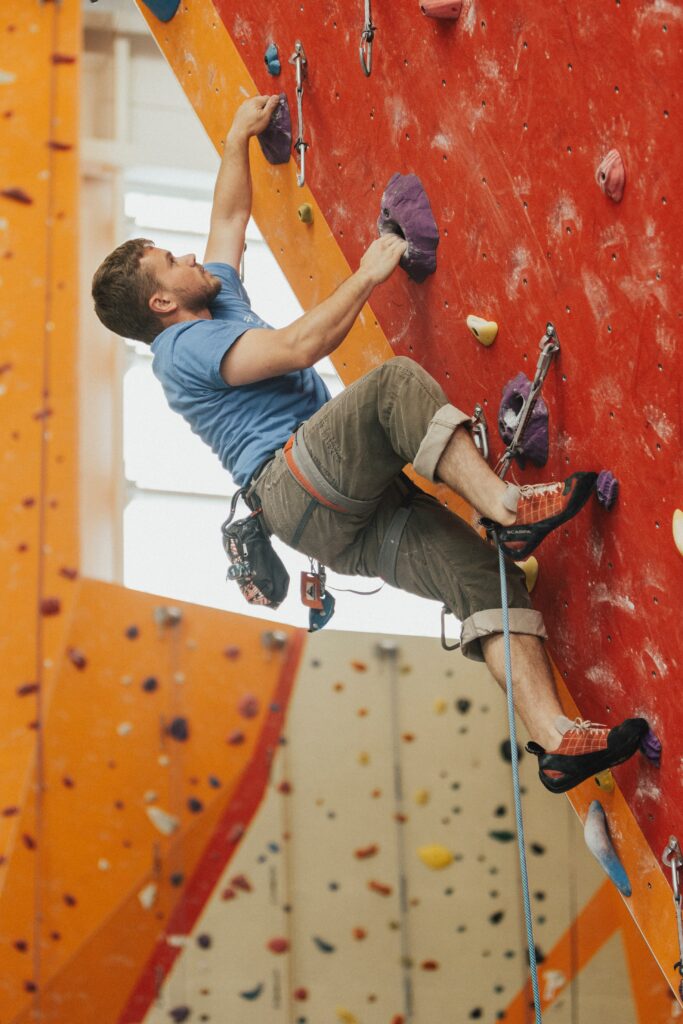Welcome to blog #1 of my Free Inquiry project! My Free Inquiry Question is “can I get past my fear of falling and successfully learn how to lead climb”. I’m excited to showcase my progression as I learn and explore the crazy (and scary) world of lead climbing!
I started rock climbing in January of this year, and fell absolutely in love with it. It was a source of exercise, an escape from school work/stress, and I made some epic friends along the way. It is an extremely important piece of my life, and I’m incredibly grateful to have discovered such a big community of climbers at UVic and Victoria!
Where my current climbing level is at is a little bit hard to explain. The way climbing grades work depends on the country, the type of climbing, and sometimes even the gym. Climbing is also incredibly subjective, so you may have differing climbing styles and preferences than your neighbour! Crag X is a climbing gym located in downtown Victoria, and their climbing grades are what I will be climbing and learning to lead climb on, so I will explain through their grades.
Climbing grades start at a low number such as 5.6 which would be the most easiest/beginner friendly. The 5 in the grade is the “class” – a 1 would be flat, whereas a 5 is a rock wall. Both grades and difficulty then go up as the number goes up. At 5.10, grades are then subdivided by letters a, b, c, and d. So, for example, 5.10b is an easier climb than 5.10d, but is harder than a climb graded at 5.9. At Crag X, the easiest grade is 5.6, and goes all the way up to 5.12d. My current climbs sit at a solid 5.10c, and sometimes I can magically get a 5.10d!
So what is lead climbing? Lead climbing is one form of climbing (it’s super hard to explain in words!), where the person climbing on the wall is attached by a rope to a person standing at the bottom of the wall. This person at the bottom is “belaying” the climber, which means that they are in control of letting the rope go through a belay device that stops the rope from slipping through when/if the climber falls or needs to be lowered after reaching the top. The person climbing works their way up a wall, clipping into bolts along the wall as they climb up. As they reach each bolt, the chance of falling closer to the ground becomes less and less. If they do fall however, the fall is a lot longer than a fall that would occur while top roping (another form of climbing).
Example of Lead (Sport) Climbing vs Top Roping:

In the image below, the person is lead climbing their way up the wall. The rope is being clipped into the bolts/clips as they make their way up. If this person were to fall at this moment, they would swing down until the rope is taut.

Photo by roya ann miller on Unsplash
In Top Roping, the person is attached to a rope that is threaded through a top anchor at the very top of the wall. That way, even if they fall, the rope will tense up, and the climber will not fall a far distance.

Photo by bady abbas on Unsplash
Lead climbing is generally done after having confidence in top roping. I haven’t tried to lead climb yet due to skill levels, but also mostly because of the fear factor. I think falling is never going to not be scary, but I believe that this Free Inquiry project is a perfect opportunity to embrace it and pursue something that I am so keen to learn!






